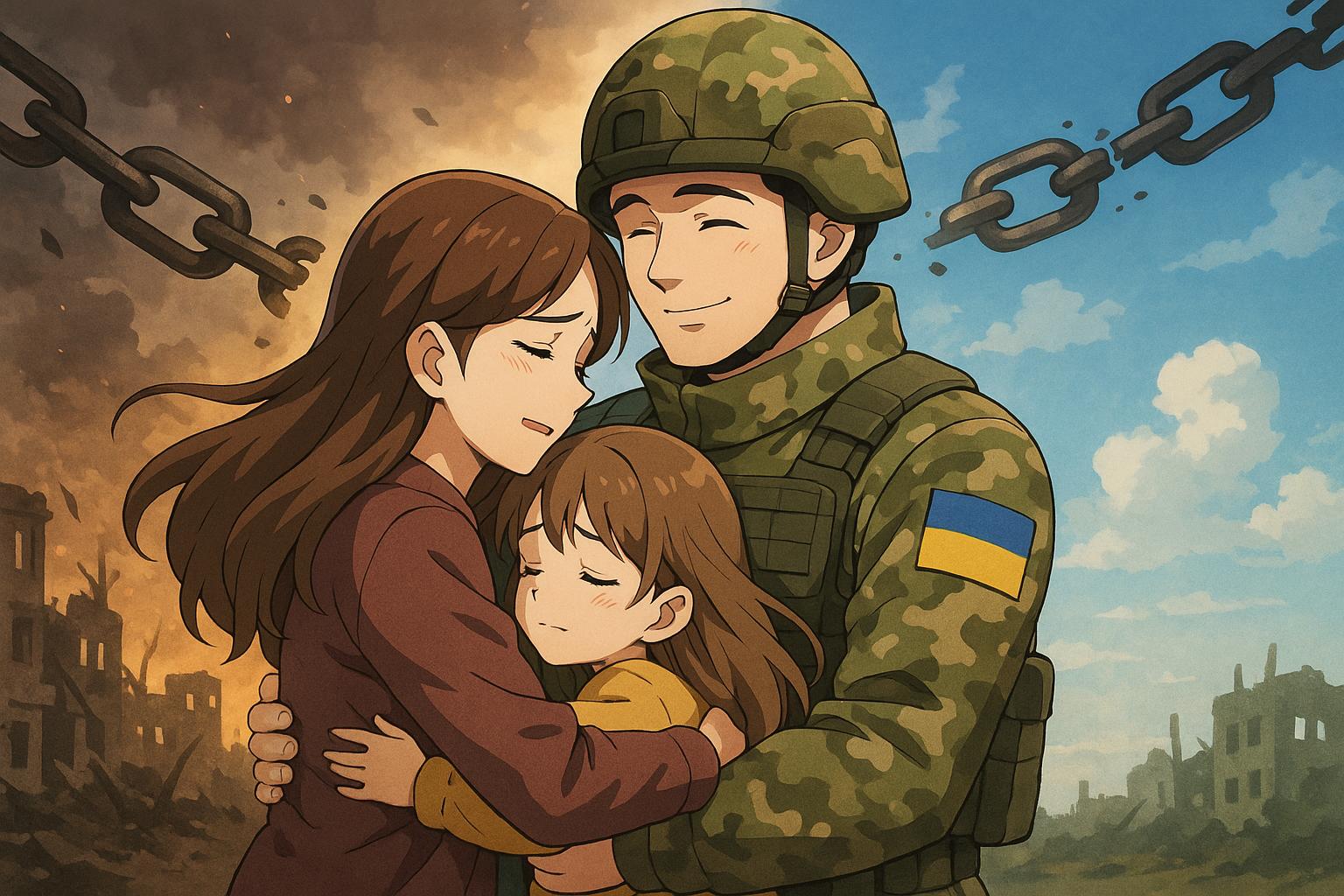The recent prisoner exchange between Russia and Ukraine, involving the release of 390 Ukrainian prisoners of war, has undeniably brought a wave of relief to the families affected, highlighting both personal triumph and the broader humanitarian imperative to secure captives' freedom. Each returnee is a testament to resilience amid the harrowing backdrop of conflict; however, analysts caution against interpreting this moment as a prelude to genuine peace.
Historically, negotiations between the two nations have been marred by a pattern of tactical exchanges rather than transformative dialogue. For over eight years, during the Minsk agreement process, periodic prisoner releases often gave rise to false hopes. These gestures allowed Russia to present itself as a negotiator willing to cooperate, all while intensifying its demands and consolidating territorial gains. Each returned prisoner, while a welcome sight, often came at a cost of further entrenchment of Russian positions and escalating rhetoric from Moscow’s proxies regarding Ukraine's territories.
As this latest exchange unfolds—bringing home a mix of soldiers and civilians—from Chernihiv to a charged frontline stretching across a thousand kilometres, the stakes could not be higher. While Western leaders, including U.S. President Trump, herald the swap as a potential breakthrough, the underlying realities paint a more complex picture. The region remains embroiled in violence, with Russian forces maintaining lethal capabilities and executing strikes in areas like Odesa and Kherson.
The current administration in the U.S. is navigating particularly intricate waters, as experience with Russian negotiating tactics remains contentious. The Biden administration's openness to dialogue risks miscalculation, reminiscent of past interactions where Russia exploited perceived diplomatic openings to further its ambitions. Although the exchange has drawn attention to the plight of those languishing in captivity, it does not necessarily signal any substantial shift toward lasting peace. The broader negotiating table remains fraught with conflicting expectations, with Russia demanding Ukrainian withdrawal from territories it has annexed—an ultimatum Kyiv, backed by its Western allies, vehemently rejects.
Subsequent discussions in Istanbul highlighted the obstacles to a ceasefire, each nation standing firm on its terms, reflecting a cyclical pattern of dialogue marred by maximalist demands. While Turkish mediators have deemed the prisoner exchange a step towards establishing trust, the fact remains that substantive negotiations are still stalled. Russia's insistence on a peace proposal that addresses what it frames as the underlying issues of the conflict reveals a lack of genuine intent for compromise.
This return of prisoners is more than a mere moment of familial reunion; it serves as a stark reminder of the continued suffering and the poignant reality that many families are still awaiting news of their loved ones. The emotional reunions seen in Chernihiv underscore the profound need for resolution, yet they simultaneously warn of the deceptive nature of negotiating tactics employed throughout this conflict.
As Ukraine navigates its arduous path to securing sovereignty and peace, critical indicators will not reside in the frequency of prisoner exchanges but in the cessation of hostilities, the withdrawal of Russian forces, and a verifiable commitment to respecting Ukraine’s territorial integrity. Until these benchmarks are achieved, the international community must remain vigilant, eschewing the comfort of humanitarian gestures for the clarity of strategic objectives. The past has shown that conflating these exchanges with substantive progress can lead to dire consequences, with Ukraine bearing the brunt of such misinterpretations.
While the return of Ukrainians incarcerated in Russia deserves to be met with joy and support, it also necessitates a sober reminder that lasting peace remains a complex and challenging pursuit. The lessons learned from history must compel Ukraine and its allies to approach future negotiations with clear-eyed realism, ensuring that the echoes of past errors do not resonate into the present.
Reference Map:
- Paragraph 1 – [1], [2]
- Paragraph 2 – [1], [3], [6]
- Paragraph 3 – [2], [4]
- Paragraph 4 – [3], [5]
- Paragraph 5 – [1], [2]
- Paragraph 6 – [1], [6]
- Paragraph 7 – [5]
- Paragraph 8 – [1], [4]
Source: Noah Wire Services
